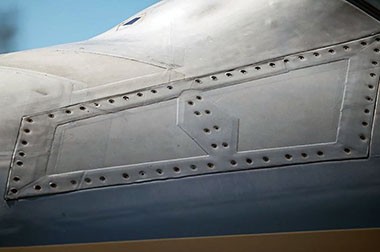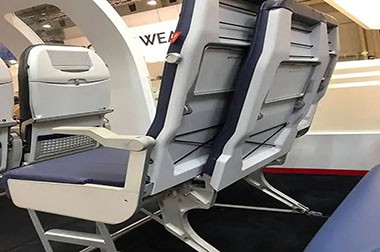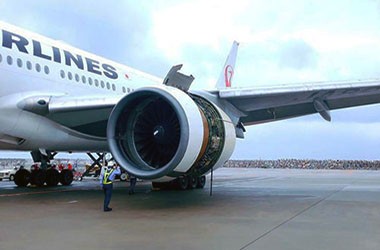2024 T3 Aluminum Plate Sheet
What is 2024 T3 Aluminum Grade?
2024 T3 aluminum is a specially processed aluminum alloy. To achieve the T3 temper, the 2024 aluminum alloy undergoes solution heat treatment, strain hardening, and a subsequent natural aging process.
2024 T3 aluminum alloy is known for its high strength, excellent fatigue resistance, light weight, and high strength-to-weight ratio, making it widely used in aerospace and other high-strength applications, particularly for aircraft structural components. However, it has poor weldability, so it is typically not suitable for applications that require welding.
2024 T3 aluminum belongs to the 2024 series of aluminum alloys, with copper (Cu) as the primary alloying element, along with manganese (Mn) and magnesium (Mg). This alloy offers extremely high strength, good fatigue resistance, and relatively good corrosion resistance.
2024 T3 Aluminum Material Specifications
This material meets the following specifications:
- ASTM -B209
- AMS -QQ-A-250/5
- AMS -4462
2024 T3 Aluminum Properties
2024 T3 aluminum features high strength, good machinability, and poor weldability.
| Property | Description |
| Fatigue Resistance | 2024 T3 aluminum has outstanding fatigue resistance, able to perform under repeated loads for extended periods without cracking or failure. |
| Corrosion Resistance | While the corrosion resistance is good, it is not as high as some other aluminum alloys (e.g., 5083 or 6061). Surface treatments like anodizing are typically required to enhance its performance. |
| Weldability | The weldability is poor, and it is prone to thermal cracking or strength reduction. It is generally not recommended for welding in this temper, and other materials with better weldability should be chosen. |
| Surface Characteristics | The surface is semi-smooth, with a dull finish, and lacks special surface treatment. |
| Commercial and Industrial Uses | Suitable for mechanical structural components, transportation equipment, etc. |
| Machinability | Good machinability, suitable for milling, turning, and stamping processes. Ideal for engineering applications that require high strength and precision. |
| Heat Treatment | The T3 temper results from solution heat treatment followed by natural aging. The strength and mechanical properties are influenced by the heat treatment process, so proper heat treatment is critical. |
2024-T3 Clad vs Bare
2024 T3 Clad is more suitable for environments that require corrosion resistance. Although it has poor weldability, its enhanced corrosion resistance makes it ideal for external structures and applications exposed to harsh environments.
2024 T3 Bare is suitable for applications where high strength is required but corrosion resistance is not a primary concern. It has better weldability and is more cost-effective.
| Property | 2024 T3 Clad | 2024 T3 Bare |
| Surface Treatment | Has an aluminum alloy protective layer that enhances corrosion resistance | No protective layer, surface is exposed |
| Corrosion Resistance | Good, suitable for humid and salt spray environments | Poor, prone to oxidation and corrosion |
| Strength and Weight | Cladding layer is thin and does not affect the strength-to-weight ratio | Has the original strength and weight ratio |
| Application Fields | Aerospace, marine, and other applications requiring high corrosion resistance | High-strength requirements but mild environmental conditions |
| Weldability | Poor weldability, cladding layer may affect welding quality | Better weldability |
| Cost | Higher cost | Lower cost |
2024 T3 Clad
2024 T3 Clad aluminum alloy refers to a thin protective layer of aluminum alloy applied to the surface of 2024 aluminum alloy. This layer is typically made of 1050, 1100, or 3003 aluminum alloys. The surface coating, known as "cladding," is designed to improve corrosion resistance without significantly affecting the strength of the alloy. Through the heat treatment process, the cladding layer bonds tightly with the base material, forming a cohesive unit.
| Item | Description |
| Corrosion Resistance | The Clad version has better corrosion resistance. The protective layer is typically made from more corrosion-resistant aluminum alloys (e.g., 1050 or 3003), making it suitable for aerospace and marine applications. |
| Weight and Strength | The surface cladding is relatively thin, adding limited weight and not significantly affecting strength, while still providing effective protection. |
| Application Fields | Commonly used in the aerospace industry, marine industry, and other applications with strict corrosion requirements, such as external aircraft structures (skin, wings, etc.). |
| Weldability | Weldability is poor, as the cladding layer may burn off, affecting welding quality. Special attention is required to welding techniques. |
| Price and Cost | The cost is generally higher than the Bare version. Using cladding is seen as an investment to extend service life and reduce the need for corrosion protection. |
2024 T3 Bare
2024 T3 Bare aluminum alloy refers to pure 2024 T3 aluminum alloy with no surface coating, meaning the surface is directly exposed to the environment. Due to the lack of a protective layer, the exposed 2024 T3 aluminum alloy is relatively weak against corrosion or oxidation.
| Item | Description |
| Corrosion Resistance | Relatively poor corrosion resistance, prone to oxidation and corrosion, requiring additional surface protection (such as anodizing or coating). |
| Weight and Strength | Has the original strength and weight characteristics, suitable for structures with high strength requirements, but maintenance needs are higher. |
| Application Fields | Commonly used in applications with high strength requirements but mild environmental conditions, such as non-external aircraft components, racing components, etc. |
| Weldability | Good weldability, can achieve high-quality welds, but post-welding performance may be inferior to other aluminum alloys. |
| Price and Cost | Relatively inexpensive, with no added cladding layer, and can be directly processed for use. |
2024 T3 Aluminum Supplied Forms
| Product Name | Description |
| 2024 T3 Alclad Aluminum Sheet | 2024 T3 Alclad aluminum sheet refers to 2024 T3 aluminum alloy with a surface cladding layer, usually made of 1050, 1100, or 3003 aluminum alloys, offering additional corrosion protection. The base material is 2024 T3 aluminum alloy, which has very high strength and excellent fatigue resistance, and the cladding enhances its corrosion resistance in harsh environments. Commonly used in aircraft skins, wings, fuselage structures, and other high-strength aerospace applications. |
| 2024 T3 Aluminum Sheet | 2024 T3 aluminum sheet is the 2024 aluminum alloy in T3 heat-treated condition, which has undergone solution heat treatment, strain hardening, and natural aging. It has high tensile strength, yield strength, and excellent fatigue resistance, but relatively poor corrosion resistance. It is typically used in aerospace structural components requiring high strength and fatigue resistance, such as aircraft fuselage and wing components. Widely used in aerospace applications. |
| 2024T3 ALUM BARE SHEET | 2024T3 ALUM BARE SHEET is a bare 2024 T3 aluminum sheet with no surface coating. It retains all the mechanical properties of 2024 aluminum alloy (high strength, fatigue resistance, and good strength-to-weight ratio), but its corrosion resistance is relatively weak. It is commonly used in environments with high strength requirements, but usually requires additional surface treatments (such as anodizing) to enhance corrosion resistance. |
| 2024T3 BARE PHOS ANODIZED | 2024T3 BARE PHOS ANODIZED refers to 2024 T3 aluminum sheet that has been phosphoric acid anodized. Anodizing increases the hardness of the surface layer and provides some corrosion resistance, making it especially suitable for use in humid and corrosive environments. This treatment effectively improves the wear resistance and weather resistance of the aluminum, and is commonly used in aerospace, automotive, and other high-strength applications. |
| 2024 T3 Aluminum Bar | 2024 T3 aluminum bar is aluminum alloy bar material in T3 heat-treated condition, with high strength, excellent fatigue resistance, and good formability. It is typically used for manufacturing aircraft structures, aerospace components, and other high-strength parts, especially in applications requiring high stress resistance and long-term fatigue use. Widely used in aerospace, racing, and high-performance mechanical parts production. |
2024 T3 Aluminum Applications
2024 T3 aluminum, with its high strength, fatigue resistance, and good strength-to-weight ratio, is widely used in aerospace, military, and high-performance industrial fields.
Aircraft Skins: Aluminum sheets for the outer part of aircraft fuselage, which need to withstand aerodynamic loads.
Fairings and Aircraft Structural Components: Due to its high strength and fatigue resistance, 2024 T3 aluminum is used in manufacturing fairings, wing spars, and other critical structural parts of aircraft.
Racing and Racing Parts: In the racing industry, 2024 T3 aluminum is used to make lightweight and high-strength chassis and other parts.
Gears and Computer Components: Its high strength and good machinability make it suitable for manufacturing precision mechanical parts.
Commercial and Industrial Uses: Such as mechanical structural components, transportation equipment, etc.
2024 T3 Aluminum Technical Information
2024 T3 Aluminum Mechanical Properties
| Mechanical Properties | |
| Property | Value |
| Ultimate Tensile Strength KSI | 70 |
| Density g/cm^3 | 3 |
| Yield Tensile Strength KSI | 50 |
| Brinell Hardness 500 kg load | 120 |
| Rockwell Hardness B Scale | 75 |
| Shear Strength KSI | 41 |
| Elongation % in 2 in. | 18 |
| Electrical Conductivity % IACS | 30 |
| Machinability % | 70 |
| Melting Point °F | 935 - 1180 |
Chemistry Information 2024 T3 Aluminum
| Element | Percentage |
| Al | 93.5 |
| Cr | 0.1 max |
| Cu | 3.8 - 4.9 |
| Mg | 1.2 - 1.8 |
| Fe | 0.5 max |
| Mn | 0.3 - 0.9 |
| Si | 0.5 max |
| Zn | 0.25 max |
| Ti | 0.15 max |








